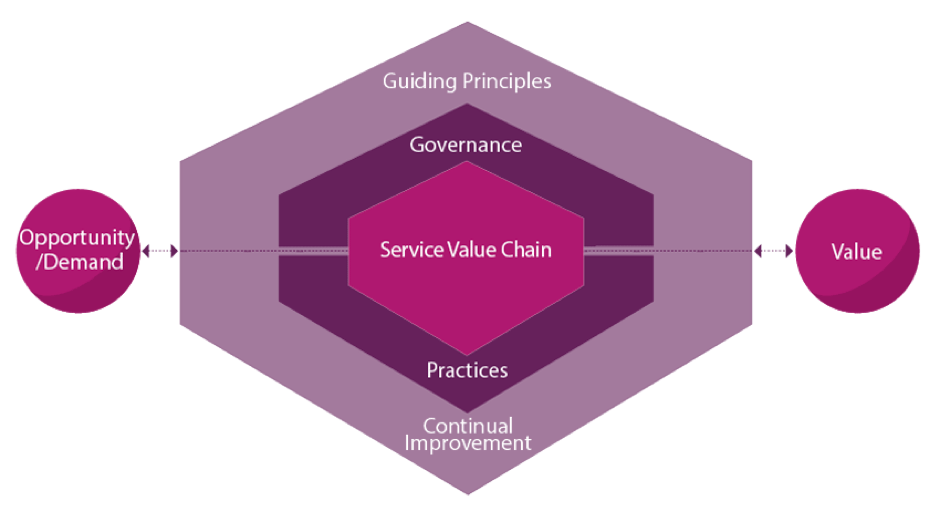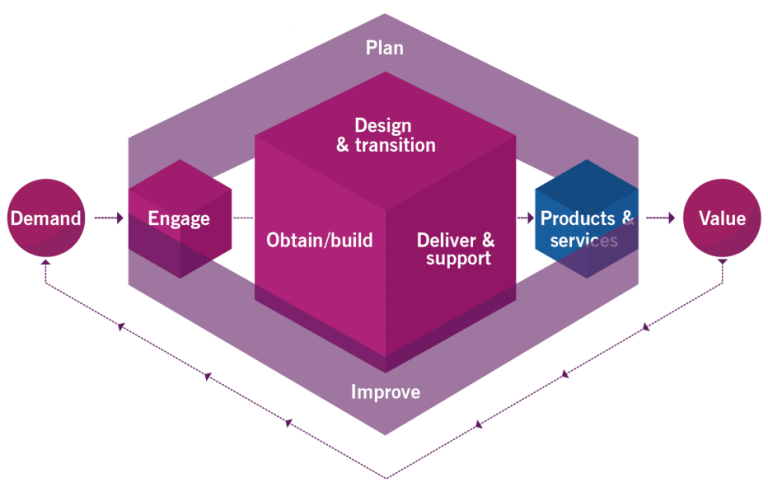
ITIL 4 SVS
In ITIL 4, services are managed through a Service Value System (SVS), which receives as an input the opportunity or demand identified by market research or direct customer request, and produces as an output the realized value expected by the ultimate user in the form of the delivered services or products.
Components of the SVS that enable the management of service or value creation and delivery are: guiding principles, governance, practices, continual improvement, and at the core of the SVS is the Service Value Chain (SVC), within which the actual creation of the value happens.

ITIL 4 SVC
The SVC receives the same inputs and outputs in the SVS. The requirements and specifications of the opportunity or demand are transformed into the final value through the mechanism of the activities that happen across the SVC.
The six activities that constitute the SVC are: Plan, Improve, Engage, Design and Transition, Obtain / Build, and Deliver and Support. The order and depiction of these activities have semantics. These are the stages of service value realization, and they correspond to the lifecycle stages in ITIL 3. Both 'Plan' and 'Improve' stages are overarching, they are elaborative and continually occurring throughout the chain. 'Engage' is an interfacing activity, and it manages relationship with stakeholders. The central three elements are the actual service management stages: Design and Transition, Obtain or Build, and Delivery and Support.
The feedback loop in the SVC indicates updating the specifications based on the measurement of the realized value, and it helps both in meeting requirements and in continual improvement.
This summarizes the relationship between SVS and SVC and meaning of 'Value' in each. There is more concerning value definition and value creation in ITIL, which can be referenced in many materials.
About the author: Rania Al-Maghraby, Owner & General Manager, OneWayForward Inc., Egypt
